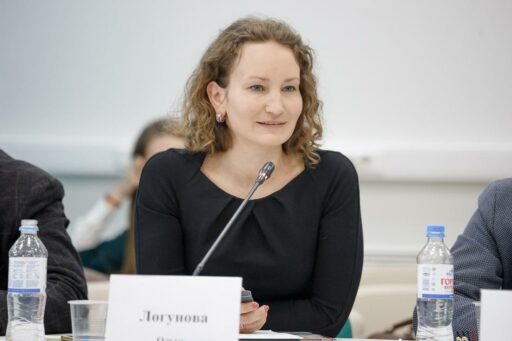The modern media system in Russia is characterized by several negative trends. These include various restrictions, such as bans on the publication of certain topics due to being labelled «extremist». There is also a widening plethora of fake news to reckon with, and all alongside a general decline in the quality of journalistic materials. In this context, social media has become an alternative platform for broadcasting a range of viewpoints. These are not always professional but offer the possibility for posting and searching for niche topics. Thus, a serious battle for viewers is unfolding along this new frontier, involving television and print media, as well as digital platforms.
The Russian social media landscape is much more competitive compared to the Central European one. Alongside international platforms (Instagram, Facebook, and YouTube), significant audiences have also been accumulated by domestic players like VKontakte and Odnoklassniki. Telegram plays an important role too, having become the main digital platform over the last two years. As of December 2023, it has the largest daily share of the audience on social media — 46.8%.
The leading role of Telegram is primarily due to the platform’s position as the main beneficiary of audience migration from other social media platforms following restrictions imposed on Instagram, Facebook, and YouTube. The significant growth of the platform is also driven by a user interest in news-related content. In particular, the focus on socio-political topics through a variety of news channels and groups has become the main type of content that gains traction on Telegram.
Furthermore, it is specifically political events in Russia, such as the beginning of the conflict in Ukraine, the mobilization efforts, and the Prigozhin revolt, that have marked pivotal moments in Telegram’s expansion. These events have further propelled the platform into a central hub for real-time information and discussion, cementing its status as a critical space for public discourse in a rapidly evolving digital and geopolitical landscape.
Looking closer at why has Telegram become the main platform … The short answer is due to the redistribution of the audience from Instagram, Twitter, and Facebook. The correct answer is more intricate.
In January 2022, the Top-3 social media among the Russian audience looked as follows: YouTube confidently held the first place, VKontakte had the largest monthly audience among social networks, with Instagram was actively growing and catching up with the two leaders. Entertainment content was the main driver of development — memes, dances, and observing «successful success.»

In March 2022, Meta was declared an extremist organization in Russia, and Roskomnadzor blocked access to Facebook and Instagram. Their use in Russia is now possible only with a VPN. This requires technical savvy, as well as time and financial investments — in any case, it’s associated with greater effort. Changes also occurred with the use of TikTok — Russians were restricted access to the app: from March 2022, users can no longer watch foreign videos or upload new ones. As time has shown, this restriction is relatively easy to circumvent. Firstly, one can stay with the old version of the app and watch the old feed or download a mod to use the full version, where new TikToks appear, and it’s possible to upload your own. It’s also worth mentioning the departure of LinkedIn, which was blocked in the Russian Federation in November 2016 for violating the rules on storing the personal data of Russian users. Thus, there was a reduction in the platforms available to users, including the leaders in usage, leading to the search for new platforms.
The departure of major players — social media, two of which held high positions, significantly reshaped the market, and users went looking for new platforms for themselves. Looking at the monthly audience share, we see a sharp decline in Instagram’s audience immediately after the restriction of its activities; Vkontakte and YouTube continue to grow organically, TikTok has stopped growing but retains its audience, and of course, we see the impressive growth of Telegram, from 35% to 68%, almost doubling in two years.
Dynamics of monthly audience May 2021 — December 2023 (compiled by the author based on open data)

There have been changes in the top three leaders — the first two places remained unchanged. YouTube (78.5%) continues to lead, functioning as television — everyone watches it, sometimes at a different time, after the broadcast, or simply when convenient to watch or re-watch. Telegram rose from seventh to third place (68%), taking over Instagram’s position. As a result, a mass migration of both authors and subscribers led to the audience deplatformisation, Rogers concept. This is the shift from one platform to another due to the blocking or closing of a digital platform. In the case of the Russian media landscape, the transition was necessitated not only by the closure of platforms but also by the difficulties in using them (the need to download a VPN, pauses in operation, upload errors) or unwillingness to endure inconveniences. It’s easier to start a channel on Telegram and find interesting authors there than to face difficulties using Instagram every day, for both content producers and consumers.
The deplatformisation is well illustrated by the data on social media consumption time among the population, that is, including non-users (consumption time among users is, of course, noticeably higher). Since November 2021, the values for VKontakte and TikTok have fluctuated at around 17−18 minutes per day. The data is presented up to and including the beginning of June 2023. The indicators for Odnoklassniki are also stable, at 5 minutes per day. However, Telegram made a dizzying rise in March 2022, catching up with the leaders with a figure of 16 minutes per day, largely due to the influx of Instagram’s audience.
Thus, we can identify two trends. The first is the fragmentation of the audience. To reach a larger audience, authors have to segment and redistribute content, adapting it for a wider set of platforms. Celebrities and influencers have always managed several platforms at once, usually focusing on a maximum of two as their main ones. Now, they are maintaining at least three platforms regularly, often duplicating content. Most authors have created a Telegram channel, revitalised Vkontakte, continued to manage Instagram, and created videos on YouTube. Additionally, several platforms such as RuTube, and Yandex. Zen have been activated or even launched from scratch, though data on them is significantly less and insufficient for comparison.
The second trend is the transition of audiences from the Meta universe to VK. Vkontakte and Odnoklassniki have noticeably revived, with the monthly audience share indicating organic growth of about 1.5% per month. To be more specific, over two years, VK’s audience grew from 68.5% to 73.5%, engaging one in every three of four users. Most users already had Vkontakte pages, so there was no need to create new ones, hence the audience grew slowly. Users value the platform for its convenient groups, favourite meme pages, and a wall for status updates.
I would like to emphasize that despite the significant potential due to audience migration, VK and Odnoklassniki did not make a leap but rather continued to grow organically through more active engagement of older audiences and new media practices. Their undisputed leadership owes much to the departure of their nearest rapidly-growing competitors.
The third trend is Telegram’s leadership, which is noticeably expanding its audience. By the daily share indicator, Telegram has been in first place since July 2023. This value demonstrates our choice of social media daily, thereby highlighting audience loyalty and consistency. Let’s look at the dynamics of this indicator over the last two years for the three current leaders.
The figures show that Telegram significantly closed the gap to the leaders in October 2022, starting from a mark of 38.4%. This was a steady growth, averaging 4% per month. In March 2023, it surpassed YouTube, and in July 2023, Vkontakte, which had been the leader for the last five years.
Dynamics of daily audience January 2021 — December 2023 (compiled by the author based on open data)

The catalysts for Telegram’s audience growth were a series of socio-political events that demanded broader coverage, a need for diverse information, the search for alternative data sources, and the comparison of viewpoints.
The first growth impulse came with the onset of the military conflict with Ukraine and changes in the media landscape, namely, the testing of alternative platforms after Instagram’s usage limitations. In March 2022, there was an incredible surge of 40%; and another 20% in April, allowing Telegram to immediately become a full-fledged player, displacing Instagram from the top three leaders.
One of the catalysts can be termed as independent media, which migrated their audience to Telegram after the State Duma hastily adopted a bill in all three readings penalizing the dissemination of false information about the actions of the Russian military in March 2022. On their Telegram channels, they could publish stories, thus becoming one of the methods to bypass censorship. It is the interest in news content, which is prevalent on Telegram, that has attracted a significant portion of the audience, who have followed their favorite media channels onto the platform.
Another noticeable increase was recorded in September-October 2022, during the announcement of mobilization, where we note a growth of 5−7% over two months.
The next jump was a 5% increase in July 2023, following Prigozhin’s rebellion, which allowed it to take first place, surpassing the audience’s favourite Vkontakte and the customary YouTube. Events in political life become growth points for Telegram, which uniquely combines audiences interested in various opinions and points of view on the socio-political life of the country, niche channels about entertainment and artificial intelligence — the most diverse thematic content.
The next noticeable growth is expected to be recorded in February-March 2024, as a reaction to Navalny’s death. However, data for this period will become available in April-May. It’s also important in this context to see how the VK and YouTube audience reacts — whether they will increase in parallel or if growth will continue only for the leader. The next question I ask myself is — how much exactly will the audience grow in April 2024, right after Navalny’s death and the presidential elections in Russia? A growth of 7−10% can be predicted. The lag may become noticeable in this case, and further audience migration from other platforms may occur.
The colossal growth of Telegram is an incredible success, given that the Vkontakte audience has been on this platform for a long time, its core has grown with the platform, it has favourite public pages and a stable network of contacts. Despite Telegram lacking the standard set of features characteristic of social networks — a profile and the ability to create a circle of friends — it was able to lead in audience not only over the most popular Russian social network but also as a video service. Uniquely, in Russia, Telega (as it is commonly called) has become more than a contact list, namely a platform where you can find interesting channels and groups for any taste.
Why was a messenger with niche thematic channels able to accumulate such a significant audience, and what became its advantages? Technical difficulties and restrictions related to VPN coincided with a shift in user interest, who began to seek news and economic summaries more frequently. For this, operational updates were needed, which is precisely what Telegram offers. Moreover, this platform is not part of VK, making users’ personal data seem more protected.
The demand for news content brought Telegram to the forefront of daily media consumption routines, while still retaining entertainment content. Specifically, news channels are the leaders in the number of subscribers and views on this platform. Among users, 28% of the time is dedicated to consuming channels, the most popular of which focuses on news content. The average daily consumption time on Telegram accounts for 33% across all age groups over 25. A younger audience analyzed spends significantly more time on the platform, 55 minutes a day. In this segment, it’s the absolute leader with a daily reach of 76%.
Thus, Telegram’s popularity is due to a combination of the following advantages:
- Combining messenger capabilities and a social media feed through a thematic variety of channels and groups;
- The ability to transfer different types of files, including large and bulky ones;
- The opportunity to create interest-based channels and groups for coordinating various tasks and projects;
- Platform capabilities for creating your own blog — a modern LiveJournal — where you can write and attract an audience, including earning from advertising collaborations and promoting brands and products;
- Personal data security, reducing the risks of data transmission to government bodies in Russia.
In the dynamic expanse of Russian social media, Telegram’s rise is intimately tied to its role as a pivotal forum for socio-political discourse. The platform has adeptly become a preferred venue for a spectrum of media, ranging from independent to state-affiliated channels. Each utilizes Telegram to circulate content. Independent media seek to fill the gaps left by mainstream outlets, often offering alternative perspectives on domestic and international events. Conversely, state-aligned channels utilize the platform to amplify official stances and galvanize support for government initiatives. This diversification of sources has transformed Telegram into a key space for narrative competition.
However, alongside the advantages of immediate information dissemination and discussion facilitation, Telegram faces scrutiny regarding content authenticity and user security. The proliferation of bots on the platform, capable of generating vast volumes of content, raises concerns about misinformation and the manipulation of public opinion. Security concerns are further magnified by the lack of ubiquitous end-to-end encryption, a feature reserved only for Telegram’s «secret chats.» This bifurcation of privacy protection complicates user assumptions about the confidentiality of their communications, underscoring the need for greater awareness and potentially more robust security measures. As Telegram’s user base expands, navigating the intricacies of content veracity and safeguarding personal communication becomes increasingly critical, setting the stage for ongoing discussions among users, developers, and regulators.










